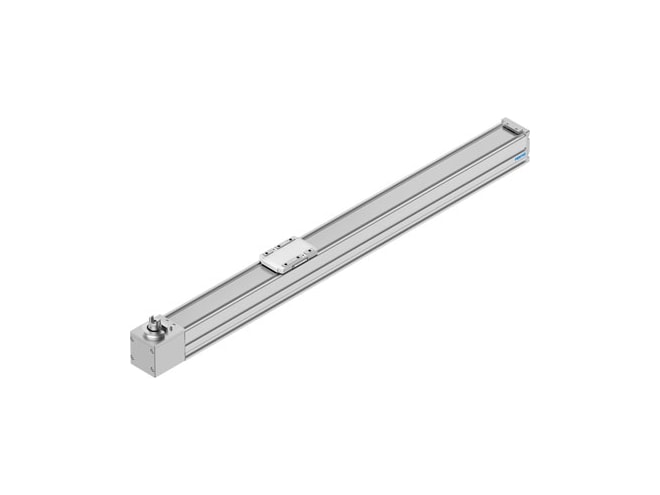Festo ELGC Series Toothed Belt Axis
Compact, belt driven linear actuator with gantry axis, recirculating ball bearing guide, and up to 2,000mm stroke.

Overview
Features
- Size 45, 60, or 80
- 200 to 2,000mm stroke
- ±0.1mm repetition accuracy
- 32 to 122°F (0 to 50°C) ambient temperature
- Position sensing:
- For proximity sensor
- For inductive proximity sensors
- Stepper motor and Servo motor
- Maintenance interval: life-time lubrication
- Suitable for the production of lithium-ion batteries
- Cleanroom Class 7 according to ISO 14644-1
- IP40 protection rating
Description
The Festo ELGC Series Toothed Belt Axis linear actuator offers precise, durable rail guidance and is ideal for small parts handling and desktop applications. It has compact dimensions and integrated coupling, allowing the ELGC series to make the most out of the installation space. The permanent stainless steel cover strip is held in place by magnetic strips and protects the internal guide and toothed belt. With high-performance drive and guide elements, the ELGC series offers long service life, excellent load-bearing capacity, and reliability. It meets the requirements for Class 7 cleanrooms and is suitable for use in facilities producing lithium-ion batteries.
The ELGC series toothed belt axis offers a wide range of mounting options to provide optimal machine integration and scalability. The unique mounting system of the ELGC-TB series even allows for direct mounting with ELGC-BS series ball screw axes and EGSC mini-slide without an additional adapter plate.
A sealed connection for tightness of the axis is standard. Air is exchanged between the interior of the cylinder and the environment via a sealing air connection. This prevents negative pressure or excess pressure from developing in the cylinder interior. With the application of slight negative pressure, particle emission is prevented. With the application of slight overpressure, particle immission is prevented.
Need Help? Call an engineer at 1-802-880-3123
We're open 8:00 am to 5:00 pm ET
















